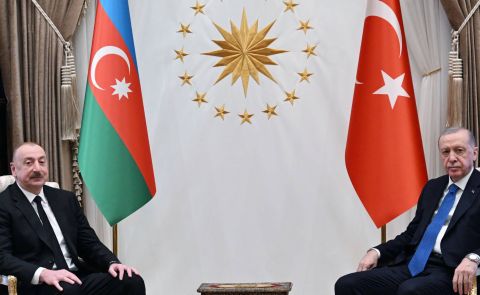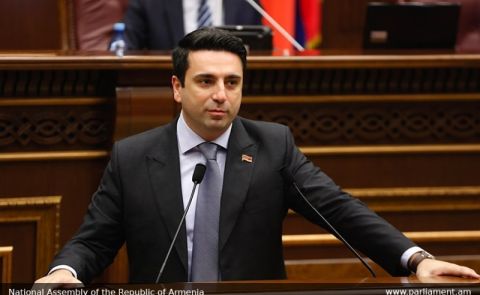
"Geopolitical prospects for expanding Eurasian integration"

On 14-15 of October, Baku hosted the 7th anniversary Summit of the Cooperation Council of Turkic Speaking States (Turkic Council). This year’ summit had a historical character as it was the 10th anniversary of the Nakhchivan Agreement, signed in 2009 by Azerbaijan, Turkey, Kazakhstan and Kyrgyzstan on establishment of a Council. This year, for the first time, Uzbekistan participated in the meeting as a full member of the Turkic Council. Earlier this year, Hungary which has been enjoying the status of an observer since 2018, announced its willingness to become an official member. On September 19, 2019, the Turkic Council opened its European office of an organization in Budapest, which aims to strengthen the relations with Hungary, and work on increasing the cooperation with the EU and European institutions, especially in economics.
Hungary’s willingness to join the Council and its integration with Europe means that Europe itself is keen to strengthen integration with the countries of Central Asia and Eastern Europe in all areas - political, economic and even energy. The European countries, mostly Central European understand that positive changes in world politics and the global economy will only occur with the equal mediation of the East and West. Hungary is a unique country, it has a valuable experience of working with the Eastern countries and being a member of NATO and the European Union. Therefore, as it was mentioned by the Minister of Foreign Affairs of Azerbaijan Elmar Mammadyarov at the 7th Meeting of Council of Foreign Ministers of the Turkic Council, “the cooperation between Hungary and the Member States of the Turkic Council is being successfully developed in a wide range of areas and we are confident that the Representation Office will serve as a facilitator in strengthening ties of Turkic Council with European institutions”.
With the modern conditions of globalization, where increased competition leads to the emergence and strengthening of regional economic associations, economic integration in Eurasia is becoming even more relevant and significant. United by common interests and tasks, the countries are keen to establish beneficial partnership. They realize that in the modern multipolar world, the predominance of any one country over another will not allow the development of a fruitful and mutually beneficial partnership, which will ultimately lead to the collapse of any economic alliance to be formed.
A key moment in strengthening geopolitical integration between Europe and Asia is the creation of a mechanism, which will foster the interconnected consolidation between countries in the East and West. The states, on both continents, have to develop strong relations in between and then, after, to follow the mutual interests, mutual benefits and mutual respect policy to interconnect at the multilateral levels. European and Asian countries see their integration through the prism of economic problems and geopolitical interests.
The implementation of major infrastructure projects, undoubtedly, has fundamental importance for raising the region’s economy and strengthening inter-regional cooperation. The infrastructural component of a large Eurasian integration is impossible without energy projects.
The only realistic way for Europe, which primarily relies on Russian gas, to diversify energy sources is to pivot to the Caspian Sea and the Central Asia. It does not mean that Russia will be excluded from the list of energy partners, simply because the relations between Germany and Russia are also moving in this direction. Russian-led Nord Stream 2 gas pipeline with a total capacity of 55 billion cubic meters of gas per year, which covers routes from North to West, from the Russian coast through the Baltic Sea to Germany is important for German energy security. German Defense Minister Annegret Kramp-Karrenbauer opposed attempts to stop Nord Stream 2. According to her, the project is important for German energy security and diversification of gas supplies.
Another important destination is the route from the South and Southeast to the West. Europe is paying special attention to the almost finished Turkish Stream gas pipeline, which has two parallel lines and will pump 31.5 billion cubic meters of gas per year of Russian gas to Europe under the Black Sea to Turkey. One of the two lines can serve as a way to deliver energy to Europe, through Bulgaria and Serbia to Hungary, as stated by the Russian Energy Minister Alexander Novak.
On the other hand, there is the Southern Gas Corridor to deliver the Caspian gas to Europe already in 2020, including the Trans-Anatolian gas pipeline, which is already operating, as well as the Trans Adriatic, which is being commissioning and progressively ready for operation. Therefore, Turkish Stream and the Southern Gas Corridor are two vital, possible and more likely scenarios, apart from the Nord Stream 2 for energy diversification of Europe, accordingly, good ways to expand Eurasia’s energy and geopolitical linkage.
The issue of interaction on simplification of borders and the creation of new routes between the states continues to be one of the most important aspects of Eurasian integration. When it comes to the Turkic Council, there is mutual interest among the countries to simplify of borders and create new routes with possible access to the European market along the East-West corridor. In turn, Uzbekistan is interested in using the Navoi-Turkmenbashi-Baku-Tbilisi-Kars railway transport corridor, which will connect the railways of Uzbekistan, Turkmenistan, Azerbaijan and Georgia with the Turkish transport network. This project was included in a comprehensive program to improve the infrastructure of Uzbekistan and diversify foreign trade routes for the transportation of goods for 2018-2022. Earlier in September, the Ministry of Investment and Foreign Trade of Uzbekistan and Turkish State Railways JSC reached an agreement on establishing multimodal transportation along the Turkey-Georgia-Azerbaijan-Turkmenistan-Uzbekistan-Kyrgyzstan-China route and back along the China-Europe route.
The parties should actively develop new formats of cooperation, providing an access to the implementation of joint investment projects for interaction in specific sectors of the economy. For example, in transport, energy, agriculture, and, accordingly, harmonization of regulation in these areas.
Considering the pace and objective conditions for the formation of a close block of countries in the Eurasian region and the features of its expansion, all potential risks and difficulties should be taken into account. Eurasian integration should not only be a combination of efforts to confront the West or as an alternative to markets limited by sanctions and counter-sanctions, but a more effective tool for integrating the countries of the region into international economic cooperation and ensuring sustainable development. The purpose of such a partnership is to manage the cooperation in the space between the four oceans with the participation of the leading states of Eurasia. Moreover, the fundamental principles of Eurasian integration should remain dominant - the openness and priority of economic interests over political ones.
Contributor: Anastasia Lavrina
Anastasia Lavrina is an Azerbaijan born independent geopolitical and foreign policy researcher, journalist, TV presenter and expert commentator. In 2014, she completed a dual-degree Master program in International Relations and Contemporary Politics, validated by Coventry University in the UK and Lazarski University in Poland. In 2016, she obtained her second Master’s degree in Diplomacy and International Affairs from ADA University in Azerbaijan. Her main areas of expertise include the Russian Foreign Policy, the South Caucasus, Eurasia, Energy Geopolitics, Conflicts Resolution, and EU Studies.
See Also

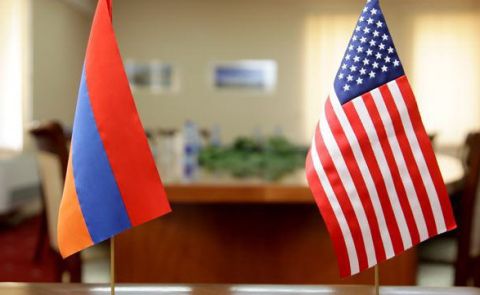
Mirzoyan Meets US Deputy Assistant Secretary Joshua Huck
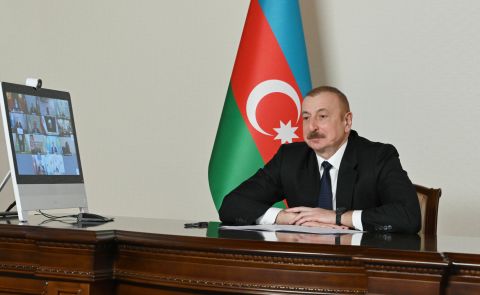
Azerbaijani President Holds Talks with UAE and German Business Delegations on Economic Cooperation
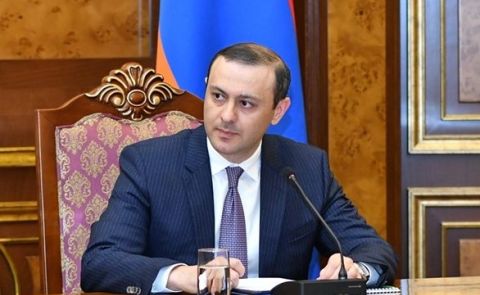
Grigoryan Confirms Armenia’s Readiness to Dissolve OSCE Minsk Group Upon Peace Treaty Signing
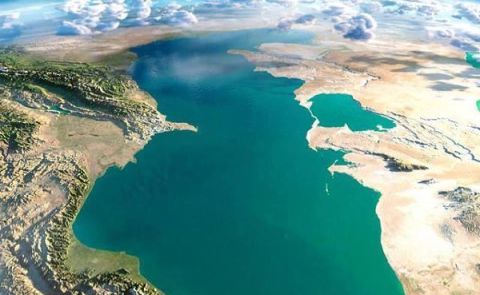
Azerbaijani Official Warns of Ecological Risks to Caspian Sea, Similar to Lake Urmia and Aral Sea
